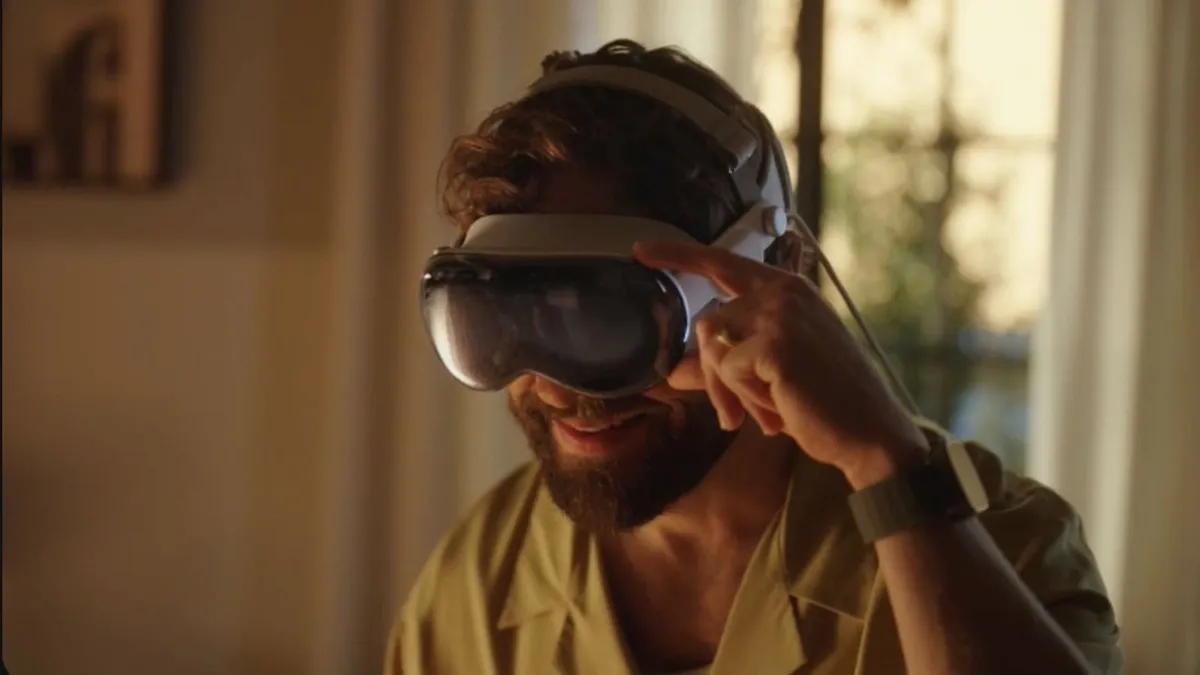
Apple's Vision Pro headset has sparked considerable dissatisfaction among early adopters, according to a recent article published by The Wall Street Journal. Since its launch, feedback from users has highlighted significant concerns regarding the device's weight, limited use cases, and a sparse software ecosystem. Many early buyers report that their expectations for comfort, software support, and social acceptance have not been met, leading to a lack of usage over the past year.
In interviews conducted by The Wall Street Journal, users expressed frustration with the Vision Pro's weight, which ranges from approximately 600 to 650 grams (1.3 to 1.4 pounds). This weight is considerably heavier than typical consumer-grade headsets, and its front-heavy design has become a common complaint. Dustin Fox, a real estate agent from Centreville, Virginia, shared his experience, stating, "It’s just collecting dust. I think I’ve probably used it four times in the last year. It’s way too heavy. I can’t wear it for more than 20 or 30 minutes without it hurting my neck."
Another issue highlighted by users is the limited software ecosystem. Tovia Goldstein, a 24-year-old from New York City, commented on the discomfort he experienced while watching content on the headset. He stated, "After 60 minutes, you can’t; you just have to throw it down. I wouldn’t recommend anyone buying it, unless you’re really rich and you don’t know what to do with your money." Goldstein also noted that the lengthy startup time, which requires connecting an external battery and waiting several minutes, further detracts from the user experience.
The Vision Pro debuted with significant fanfare, including a launch event in New York City attended by Apple CEO Tim Cook. Initially, users were seen wearing the headset in various public spaces, generating excitement. However, many early adopters report that public enthusiasm quickly faded. "People were excited to be wearing it. Then it just died... I feel total regret," Fox lamented. The resale market for the Vision Pro has also been affected, with significant drops in value compared to the original price.
Social discomfort has also played a role in user dissatisfaction. Anshel Sag, a technology analyst from San Diego, utilized the Vision Pro for in-flight entertainment but stopped due to unwanted attention from fellow passengers. "I got pretty dirty looks from people. I don’t need that. It takes up like half of the volume of my carry-on," Sag explained. The headset's travel case, sold separately for $199, adds to the challenges, being large and cumbersome.
Anthony Racaniello, a media studio operator from Philadelphia, attempted to use the headset both at work and during air travel but faced similar social alienation. During a nearly six-hour flight, he described being ignored by a flight attendant, remarking, "You look like you have a sleep mask on. And people are going to treat you that way." Racaniello ultimately sold his Vision Pro for $1,900, incurring a significant loss of 46% from the original purchase price.
Yam Olisker, a 20-year-old YouTuber from Israel, traveled to New York to purchase the Vision Pro at launch, even obtaining Tim Cook's signature. While he acknowledges the device is "a bit early, or ahead of its time," he does not regret the purchase as he enjoys watching movies, particularly 3D films. However, he too struggles with the weight, often lying in bed to mitigate discomfort while using it.
Despite the current dissatisfaction, there are indications that Apple may be working on an updated model of the Vision Pro. According to sources like The Information, Apple analyst Ming-Chi Kuo, and Bloomberg's Mark Gurman, a second-generation Vision Pro is reportedly in active development. This new model is expected to feature an M5 chip and will likely reuse many components from the first generation to address inventory surplus. Gurman suggests that this refreshed device could be launched between fall 2025 and spring 2026.
As the landscape for augmented reality devices evolves, it remains to be seen whether Apple can address the significant concerns surrounding the Vision Pro and regain the enthusiasm of its early adopters.